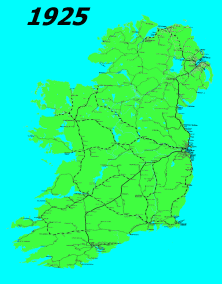
The history of rail transport in Ireland began only a decade later than that of Great Britain. By its peak in 1920, Ireland had 3,500 route miles (5,630 km). The current status is less than half that amount, with a large unserviced area around the border area between Northern Ireland and The Republic of Ireland.

Rail transport in Ireland is provided by Iarnród Éireann in the Republic of Ireland and by Northern Ireland Railways in Northern Ireland.

The Northern Counties Committee (NCC) was a railway that served the north-east of Ireland. It was built to Irish gauge but later acquired a number of 914 mm narrow gauge lines. It had its origins in the Belfast and Ballymena Railway that opened to traffic on 11 April 1848.
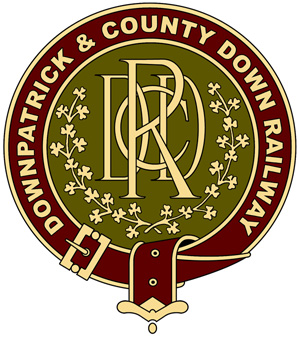
The Downpatrick and County Down Railway (DCDR) is a five-foot, three-inch gauge heritage railway in County Down, Northern Ireland. It is operated by volunteers and runs passenger trains using steam and diesel locomotives, diesel railcars, and vintage carriages. The railway has approximately three miles (4.8 km) of track in a triangular-shaped layout, which connects the town of Downpatrick with the historical sites of Inch Abbey to the north and King Magnus’ Grave to the south. It also houses a museum of railway artefacts and rolling stock originating from both Northern Ireland and the Republic of Ireland, dating from the 1860s to the 1980s.
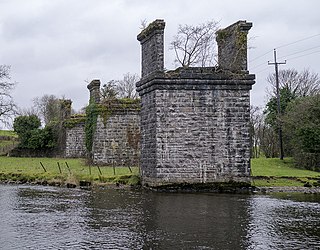
The Sligo, Leitrim and Northern Counties Railway (SL&NCR) was a 5 ft 3 in railway in counties Cavan, Fermanagh, Leitrim and Sligo in north-west Ireland. It consisted of one main line, with no branch lines and remained privately owned until its closure.

Under the Whyte notation for the classification of steam locomotives, 0-4-2 represents the wheel arrangement with no leading wheels, four powered and coupled driving wheels on two axles and two trailing wheels on one axle. While the first locomotives of this wheel arrangement were tender engines, the configuration was later often used for tank engines, which is noted by adding letter suffixes to the configuration, such as 0-4-2T for a conventional side-tank locomotive, 0-4-2ST for a saddle-tank locomotive, 0-4-2WT for a well-tank locomotive and 0-4-2RT for a rack-equipped tank locomotive. The arrangement is sometimes known as Olomana after a Hawaiian 0-4-2 locomotive of 1883.

The Indian Railways primarily operates fleet of electric and diesel locomotives, along with several compressed natural gas (CNG) locomotives. Steam locomotives are operated on a few World Heritage Sites and also run occasionally as heritage trains. A locomotive is also known as a loco or more popularly as an engine. The country's first steam locomotive ran on the Red Hill Railway from Red Hills to the Chintadripet bridge in Madras in 1837.
The LMS Northern Counties Committee (NCC) Class Y was a class of 0-6-0T steam locomotives formed when two LMS Fowler Class 3F engines were regauged from 4 ft 8+1⁄2 instandard gauge to the 5 ft 3 in Irish broad gauge in 1944 becoming NCC Nos.18 and 19.
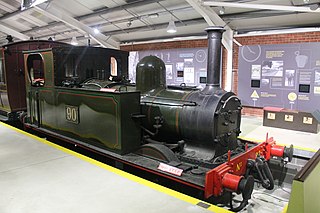
The Great Southern and Western Railway Class 90 is a class of 0-6-0T steam locomotive. They were one of the smallest steam locomotives to be inherited by the CIÉ on its formation.
The Avonside Engine Company was a locomotive manufacturer in Avon Street, St. Philip's, Bristol, England between 1864 and 1934. However the business originated with an earlier enterprise Henry Stothert and Company.
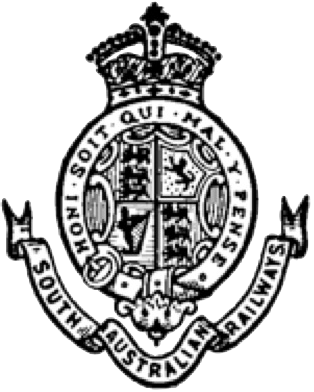
South Australian Railways (SAR) was the statutory corporation through which the Government of South Australia built and operated railways in South Australia from 1854 until March 1978, when its non-urban railways were incorporated into Australian National, and its Adelaide urban lines were transferred to the State Transport Authority.

Londonderry Port, now operating as Foyle Port, is a port located on Lough Foyle in Northern Ireland. It is the United Kingdom’s most westerly port and an important northerly port on the island of Ireland. The current port is at Lisahally, County Londonderry, though historically the port was upriver in the city of Derry itself. It is operated by the Londonderry Port and Harbour Commissioners, whose former offices, just north of the city's walls, are now a museum.
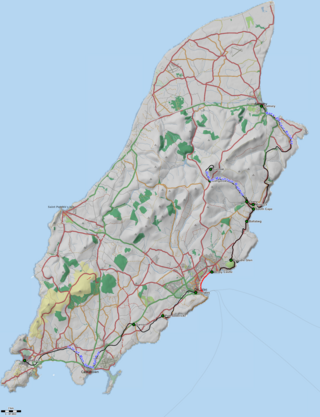
The Isle of Man has a rich transport heritage and boasts the largest narrow-gauge railway network in the British Isles with several historic railways and tramways still in operation. These operate largely to what is known as "Manx Standard Gauge" and together they comprise about 65 miles (105 km) of Victorian railways and tramways. The Isle of Man Railway Museum in Port Erin allows people to find out more about the history of the Manx railways, and was until 1998 accompanied by a similar museum in Ramsey, which was dedicated to the history of the electric line, but this was closed and converted into a youth club. The steam railway to the south of the island, electric to the north and mountain line to the summit of Snaefell, the island's only mountain, are all government-owned, and operated under the title Isle of Man Railways, as a division of the island's Department of Infrastructure. The lines at Groudle Glen and Curraghs Wildlife Park are both privately owned but open to the public.
The Belfast and Northern Counties Railway (BNCR) Class N was a class of 0-4-0ST dock engines that worked on the Belfast Harbour Commissioners' lines in north-east Ireland. No.42 was the first of the class and was built by Sharp, Stewart and Company in 1874. A second, similar engine, No.16, was built by the MR (NCC) in 1914.

The City of Derry Tramways was a tramway in Derry, Ireland that operated from 1897 until 1919. This was a standard gauge line served by horse trams and was never electrified.

The South Australian Railways W and Wx class was a class of 2-6-0 steam locomotives operated by the South Australian Railways. Some were used by the Commonwealth Railways in the Northern Territory and by contractors.

The O&K CSÉT Shunting Locomotives were a class of nine small Irish steam locomotives built in Berlin, Germany, by Orenstein & Koppel for shunting wagons of sugar beet at the three Irish Sugar Company factories in Mallow, Thurles and Tuam. They were delivered in two batches, with the first six arriving in 1934 and the last three in 1935. The 1934 batch was paid for by barter, using cattle as payment. Each factory received three locomotives, and numbered them independently, leading to each factory having a No. 1, a No. 2 and a No. 3. Each factory applied their own design of number onto the tanks, and in some cases, bufferbeams, of their respective locomotives.
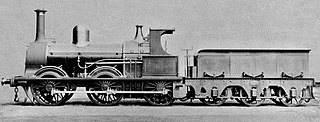
The two locomotives comprising the South Australian Railways J class were the only steam locomotives with a 0-6-0 wheel arrangement ever operated by the railway. They went into service in August 1875 and were condemned more than five decades later, in 1932 and 1934.

The first South Australian Railways I class locomotive was built by Neilson and Company, Scotland for the Canterbury Provincial Railways, New Zealand in 1873 and numbered 9. In May 1878 the South Australian Railways (SAR) purchased it. The ship that transported it to South Australia was wrecked, but the locomotive was salvaged and entered service on the SAR in April 1879 as number 38. In 1880 or 1881 it was renumbered 48. It was allocated to "I" class – which was ultimately to be known as the "first I class" – in 1887 or 1888. In October 1905 the SAR withdrew it from service, then sold it in May 1906 to the South Australian Harbours Board for use in the construction of the Outer Harbour breakwater. It was scrapped in August 1909.
















